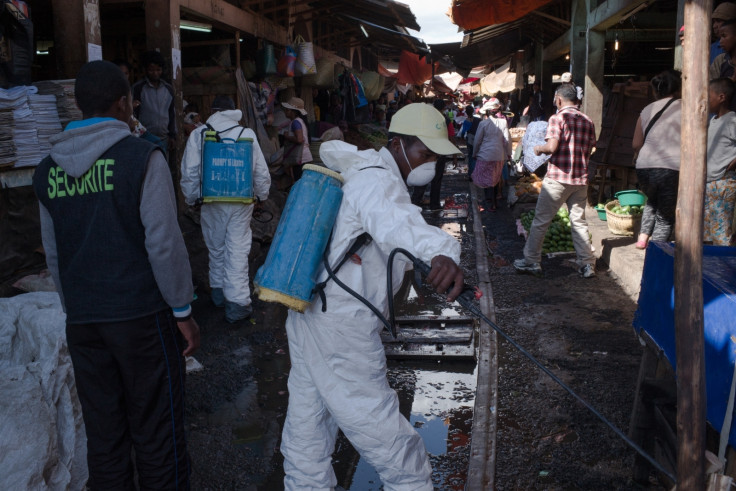Black Death plague scare in Africa – Things you need to know about the devastating pandemic
Malawi has become the tenth country in Africa to be put on high alert over fears that the plague could spread there from Madagascar.

At least 10 African nations have been put on high alert over fears regarding the spread of the Black Death plague, which has already killed at least 140 people in Madagascar.
Malawi, South Africa, Ethiopia, Kenya, Mozambique, Seychelles, Tanzania, La Reunion and Mayotte, Mauritius and Comoros are the nations taking precautionary measures to limit the spread of the disease from the east African island.
Madagascar's outbreak started in August and has spread to more than 2,000 people in the region.
Although the particular strain bothering the island nation, located off the southeast coast of Africa, can be easily treated with antibiotics, the speed at which the plague is spreading is alarming.
Experts fear that the virus may spread further due to an ancient ceremony, known as Famadihana, which is still practised in the country. Famadihana is a funerary tradition of the Malagasy people in Madagascar in which they dig up the bodies of their loved ones, rewrap them in fresh cloth, and then dance with the corpses to live music.
What is Black Death?
Believed to be one of the most devastating pandemics in human history, the Black Death plague has claimed the lives of an estimated 75 to 200 million people in Eurasia, peaking in Europe in the years 1346-1353.
The disease is caused by the Yersinia pestis bacteria, which is commonly present in populations of fleas carried mostly by ground rodents in various areas, including Central Asia, Kurdistan, Western Asia, Northern India and Uganda.
There are three forms of plague – bubonic plague, septicemic plague and pneumonic plague. Septicemic plague is the least common of the three types with a mortality rate of nearly 100%, while the most common is bubonic.
People generally contract bubonic plague when an infected rodent or flea bites them. In some cases, one can even get the bacteria from a material that has come into contact with an infected person.
If a person suffering from bubonic plague leaves the disease untreated, it can move into his/her lungs, causing pneumonic plague. It is the most contagious of the three because when the infected person coughs, the bacteria from their lungs spread into the air. Other people who breathe that air can also develop this highly-infectious form of plague, which can lead to an epidemic.
Septicemic plague develops when the bacteria enters the bloodstream directly and starts to multiply there.
Symptoms of the plague
As the plague is of three types, the signs and symptoms are different for all of them.
Bubonic plague: People infected with this type generally show symptoms of fever and headache. They also suffer from muscle pain, general weakness and seizures. Some also experience painful, swollen lymph glands, called buboes.
Pneumonic plague: Trouble while breathing, chest pain, cough, fever and bloody sputum are the common symptoms of the disease. These signs appear quickly, sometimes within just one day after exposure to the bacteria.
Septicemic plague: The symptoms for this type generally show within two-to-seven days after exposure, but septicemic plague can sometimes lead to death before symptoms even appear. Signs include abdominal pain, diarrhea, nausea and vomiting, bleeding and skin turning black.
Treatment and prevention
The Black Death plague can lead to a life-threatening condition that requires instant care. If diagnosed in time, it can be easily treated using antibiotics that are commonly available.
But there are also a few precautions that need to be followed to prevent it from spreading further. People with pneumonic plague must be isolated from other people and monitored. If someone has come into contact with a person with the disease, he/she should also be monitored immediately and be given antibiotics as a preventive measure.
In the wake of the recent outbreak, the World Health Organization (WHO) said that its control measures will be in place until at least April 2018, as August to April is the time period during which cases of the plague are at their highest.
The WHO has pledged £3.8m ($4.9m) to combat the spread of the deadly disease, which will go towards the recruitment of additional medical personnel in the area, fuel for local ambulances and disinfection of buildings where treatment is being carried out.





















